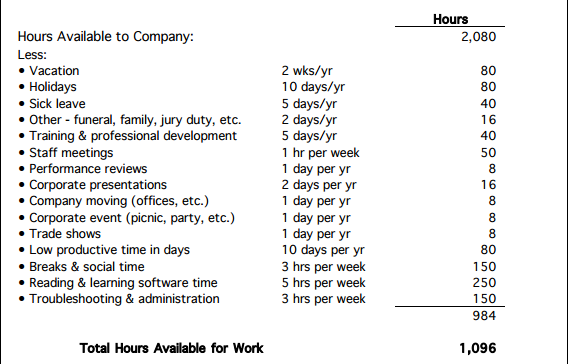 As with any workplace, staff costs can make (or break) your budget. In Higher Ed IT, we are often asked to spin straw into gold; creating the most robust technology environment possible using minimal university resources. One way to produce under such pressures is to create the right balance of team member types, hiring independent contractors for certain roles and employees for others. While there are many benefits to hiring an employee, such as loyalty, continuity across projects, and the retention of years of knowledge, there are also many benefits to working with an IT contractor. In most situations, these benefits boil down to your bottom line: hiring an independent contractor can often save you money over hiring an employee in Higher Ed IT. From the “hidden” costs of hiring an employee to the more obvious benefits of contract labor, we’re here to show how they compare and reveal the numbers behind hiring employees vs. contractors.
As with any workplace, staff costs can make (or break) your budget. In Higher Ed IT, we are often asked to spin straw into gold; creating the most robust technology environment possible using minimal university resources. One way to produce under such pressures is to create the right balance of team member types, hiring independent contractors for certain roles and employees for others. While there are many benefits to hiring an employee, such as loyalty, continuity across projects, and the retention of years of knowledge, there are also many benefits to working with an IT contractor. In most situations, these benefits boil down to your bottom line: hiring an independent contractor can often save you money over hiring an employee in Higher Ed IT. From the “hidden” costs of hiring an employee to the more obvious benefits of contract labor, we’re here to show how they compare and reveal the numbers behind hiring employees vs. contractors.
Staffing Flexibility
Since contractors are hired to execute a specific task, working with them allows a segment of your employee pool to ebb and flow relative to the amount of work your department has to do. This means that you’ll only have the amount of help you need when you need it rather than finding yourself over-staffed for some scenarios and under-staffed for others. Although they may not wear as many hats as full-time employees, contractors can often join a project and hit the ground running. Some staggering data suggests that a regular employee’s non-peak productivity hours could account for approximately 50% of their work time; that’s a lot of hours to have an employee “off the clock” while on the clock.

If a contractor doesn’t wind up being a good fit for your department, you can simply trim them from your team with very short notice. This ensures that you get the best person for the job (and for your environment) precisely when the job needs to be completed and that you don’t have to take the risk of a long-term investment in an individual you haven’t worked with before. When the job is done, you scale your workforce appropriately, minimizing wasteful workforce overhead.
The Real Hourly Cost
While a contract worker might, at first glance, seem to be paid a higher hourly sum than an employee, it’s worth considering the specifics of those numbers. This employee vs. contractor cost calculator from Toptal is a great resource for examining those salaries. A contractor might charge $75/hr for their labor and a salaried employee of similar skill might be paid $45/hr for their work, but there are a lot of hidden costs to hiring an employee that aren’t reflected in their hourly pay. Let’s break down the overall costs behind those numbers.
The biggest difference cost-wise between an employee and a contractor is the amount of benefits and overhead that your university will pay for. The salaried employee may be entitled to several benefits that the contract worker would not. These may include but are not limited to:
- Insurance and retirement
- Training seminars and specialized certifications
- Yearly raises
- Software and other supplies
- Use of facilities and other technology
- Recruitment and other induction costs
- Tuition reimbursement
These “hidden” costs of employee labor really add up, but there’s more to the cost of labor than just benefits. Both employees and contractors will end up costing your department more than expected because of what Toptal calls “general and administrative” costs. These range from legal to accounting fees and can cost approximately 20% of the worker’s salary per year on average.
With benefits, overhead, and administrative costs factored in, an employee’s overall cost can be somewhere between 1.5 and 2.5 times their hourly rate. This means that the employee hired at $45 an hour can end up costing your department approximately $90 an hour instead. In contrast, the contractor that was hired at $75 an hour would end up costing your department the same amount, despite their drastically different hourly rates. Add the fact that the average employees’ peak productivity hours are significantly less than a contractor’s and it’s easy to see just how expensive hiring an employee can get.
When planned strategically, the inclusion of contractors in your employment roster can help keep costs down and workflow up, and that’s what keeps a department running smoothly. If your department is in a pinch, contract labor can make a big difference to staying on task and on budget.
Avoid costly mistakes and wasted time – talk to an impartial peer in Higher Ed!
There is nothing like speaking with a peer who has implemented the same product – send us a request.
You can also provide general feedback, inquire about additional free resources, submit a topic you’d like us to cover, tell us about a feature you’d like to see, or request the best staff for your project.